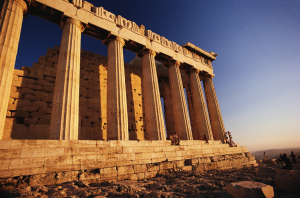In planning to direct our school play, I stopped to adjust when this live history fair replaced the spring drama. Yikes!
In coordinating this event, I started with this six-step plan:
STEP ONE: Learning
STEP TWO: Gathering
STEP THREE: Organizing
STEP FOUR: Delegating
STEP FIVE: Presenting
STEP SIX: Executing
To explain the process, I will cover steps one and two in Part 1, then steps three and four in Part 2, and finish with steps five and six in Part 3.
This journey was a learning experience with setbacks along the way. Not every event is smooth sailing. This event definitely stretched my abilities and tapped into my creative thinking which I will begin sharing with step one.
STEP ONE: Learning
When presented with the idea of a live history fair, I’m sure I raised my eyebrows. I was thinking, “What is a live history fair?” The students already present, so how much more “live” can the program become?
Though I was leery of the idea, I listened. After a few meetings, since I did not grasp the concept the first few times, I came to understand that this event showcased “history in action.” Instead of using narrative stories or first-person accounts, the students would show through skits, plays, songs, and poems the different historical events.
With this understanding, I presented the new format to the teachers. Each class would choose a theme, material, costumes, and props for their performance. In calming the teachers and reassuring them that help was near, I offered my assistance to help formulate a plan.
STEP TWO: Gathering
After the meeting with the teachers, I followed up with an e-mail asking for details of their presentations and gave them about a week to respond.
During this time, I learned that two upper school classes, the geography students and the American History pupils, would present individually. With suggestions, I agreed to add music presentations and an art display incorporating the students’ work from the school year.
As I fielded questions and suggestions, I chose not to turn anyone away. The goal in this step was to gather all the possible pieces together. As the deadline approached, I contacted those missing elements and helped by finding a poem, making suggestions, and discovering a teacher that I missed originally. Oops!
With the information gathered, I moved on to Step Three – organizing the pieces which I will continue in next week’s event planning post.
In coordinating our live history fair, I started with learning and gathering. Getting a grasp on the concept of a live history fair helped me focus the content on reaching the goal. Working with teachers, parents, and volunteers throughout this process made my job easier. Keeping a calm atmosphere, a can-do spirit, and an open mind, I learned from others and gathered information while using time wisely on my journey to a successful live history fair.
Though you may not coordinate a live history fair, you may lead another unique-to-you event. During these times, stay calm, listen, and learn. Getting a handle on your event before adding selections, acts, booths, speakers, or other items will focus your attention before gathering the parts to your event. Take it one step at a time, and happy planning!
Question: When you plan an event, how does your sequence of planning differ from mine?
